
English Encyclopedia
 United Kingdom
United Kingdom
 America´s Cup 2017
America´s Cup 2017
 Australia
Australia

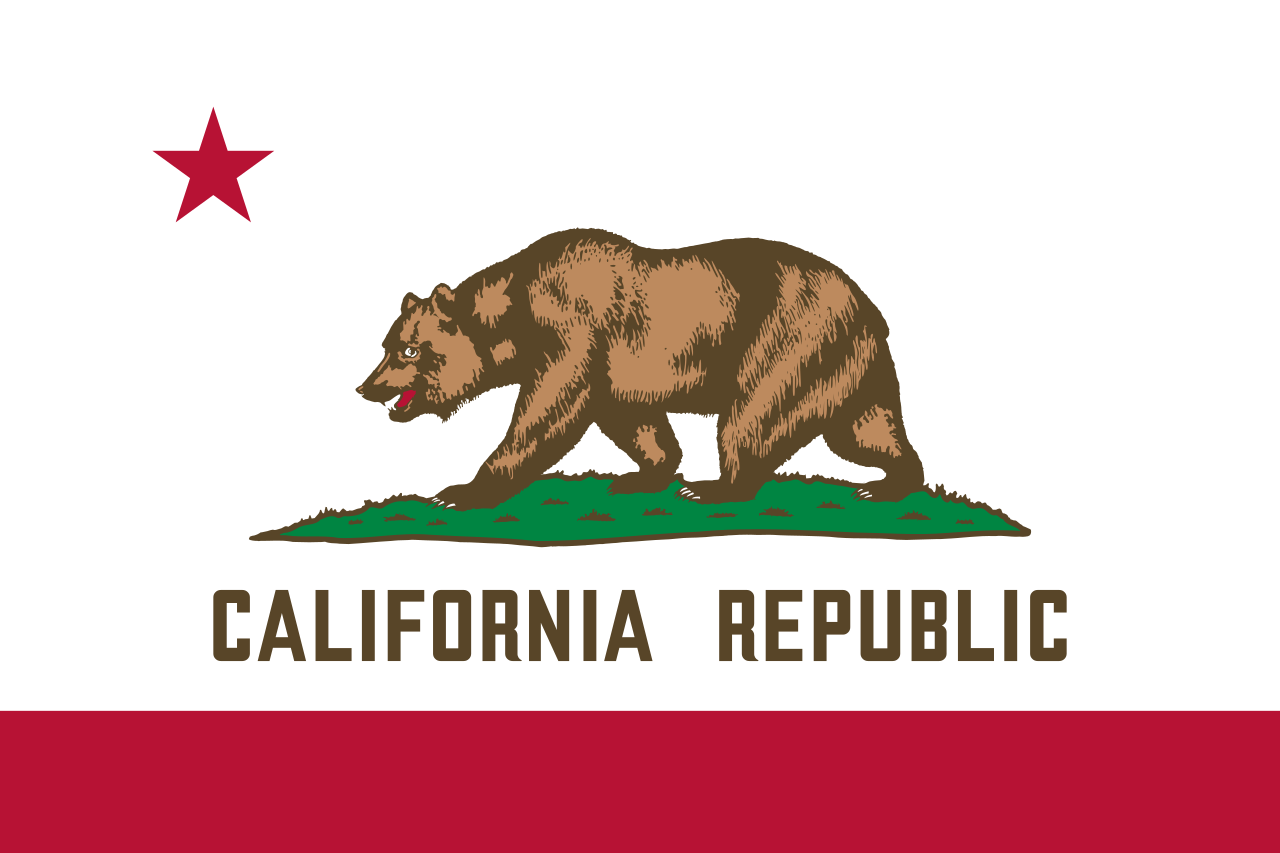 California-CA
California-CA

 China
China

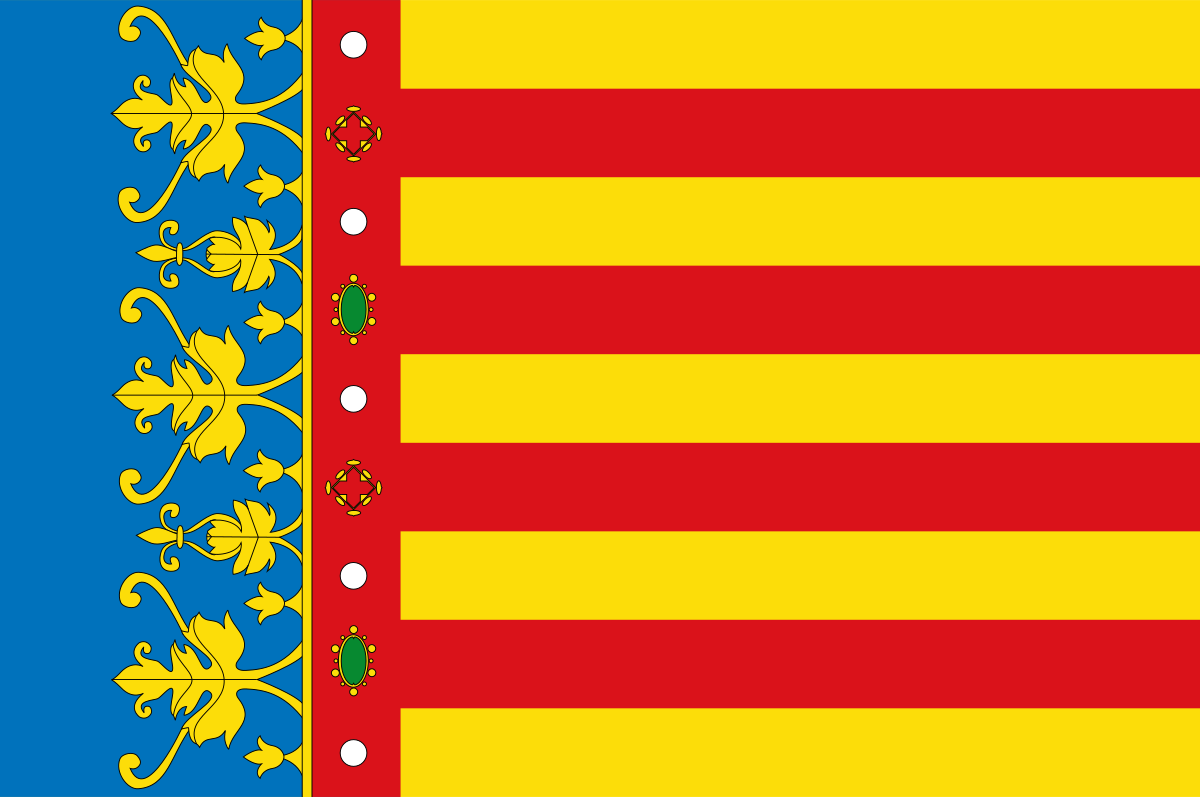 Valencian Community
Valencian Community
 England
England
 France
France
 Greece
Greece

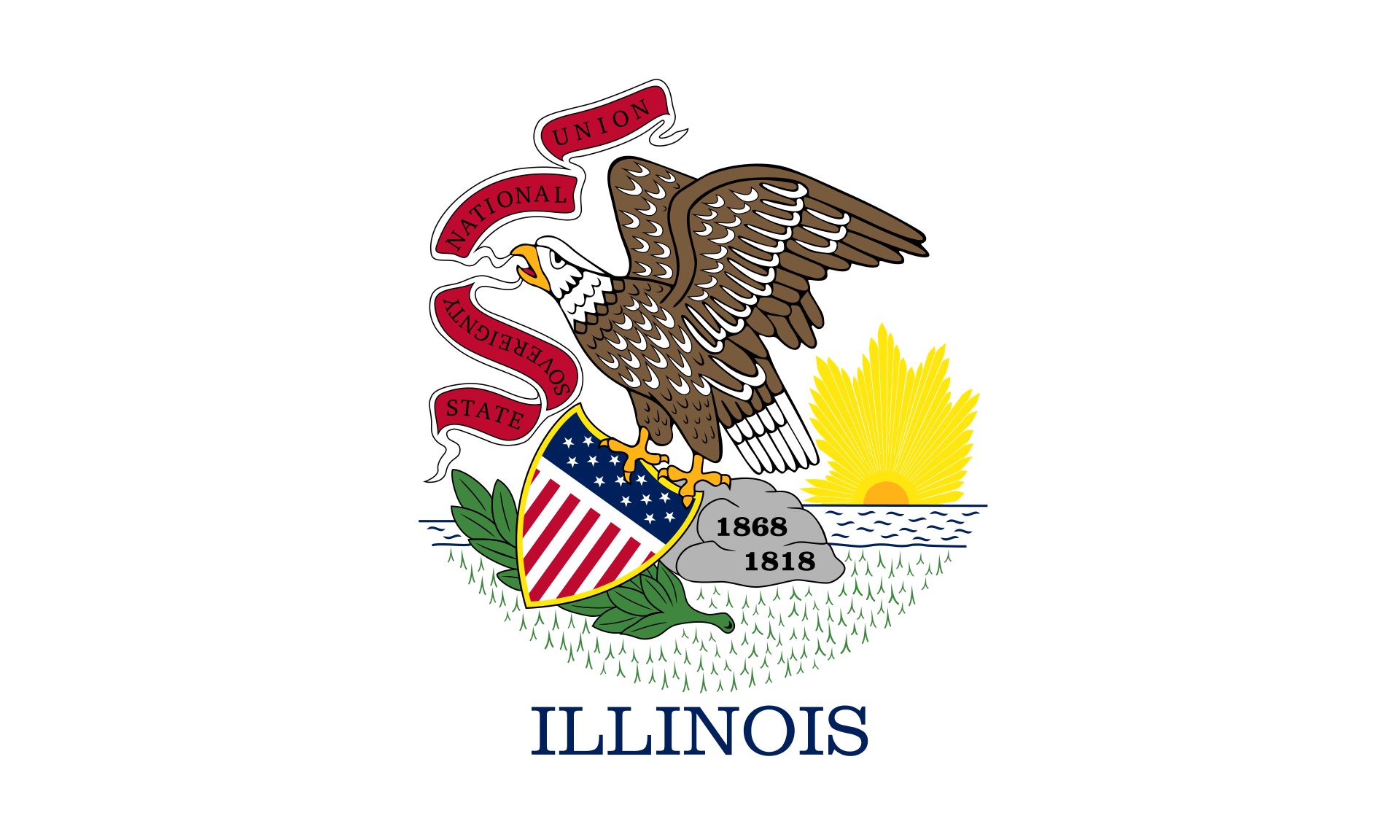 Illinois-IL
Illinois-IL
 Italy
Italy
 Japan
Japan
 Kyūshū
Kyūshū
 New Zealand
New Zealand

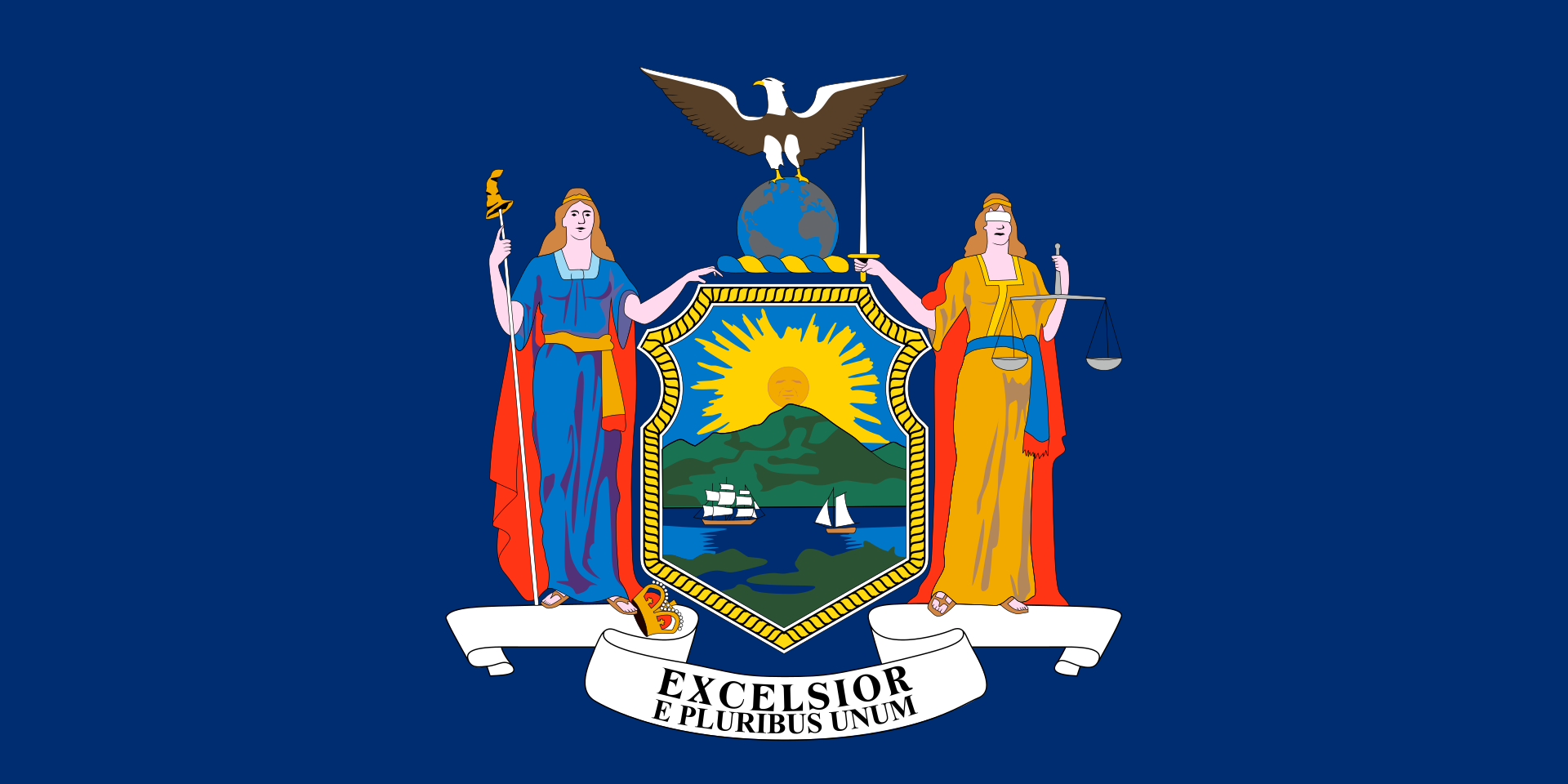 New York-NY
New York-NY
 Oman
Oman
 Austria
Austria

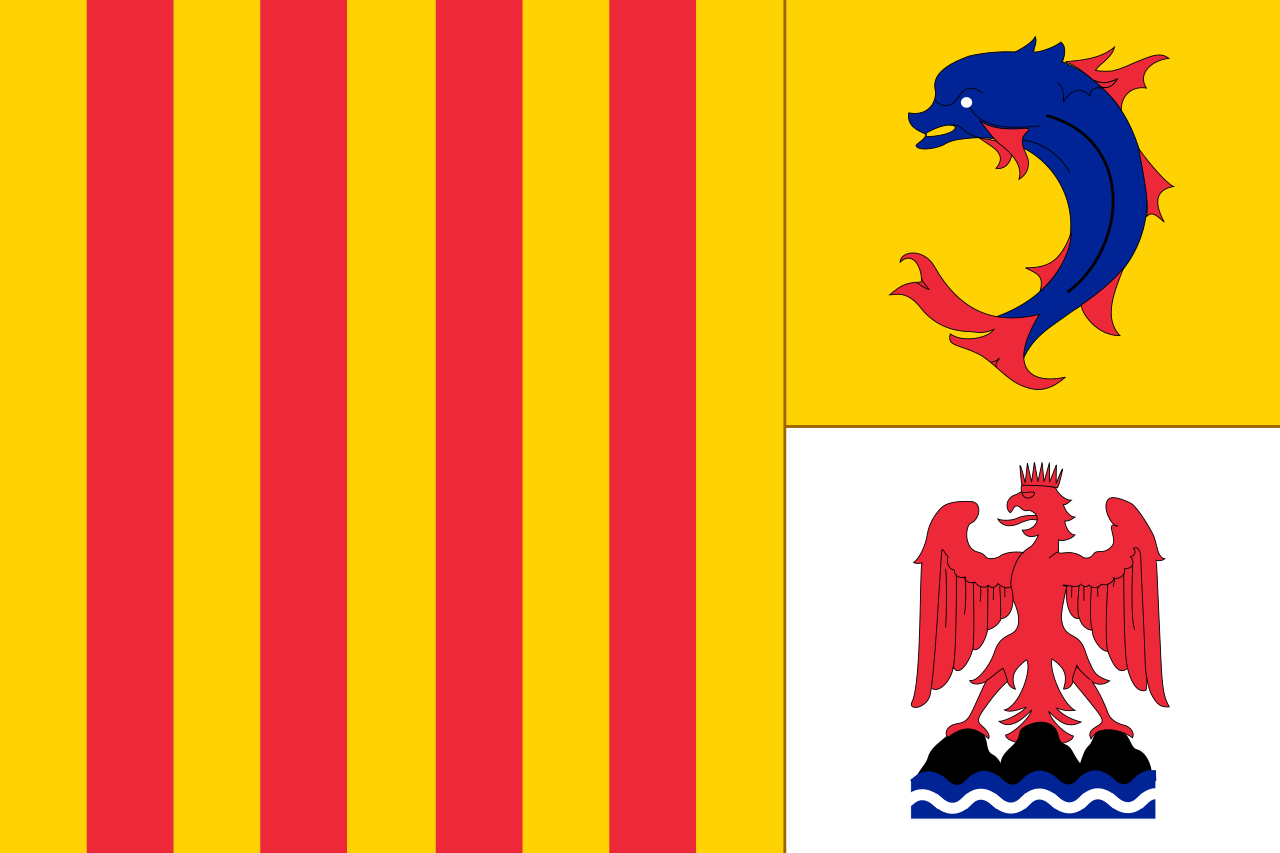 Provence-Alpes-Côte d´Azur
Provence-Alpes-Côte d´Azur
 Republic of Korea
Republic of Korea

 Rhode Island-RI
Rhode Island-RI
 Russia
Russia

 Ships and Nautics
Ships and Nautics
 Sweden
Sweden
 Spain
Spain

 Sport
Sport
 America´s Cup
America´s Cup

 United Kingdom
United Kingdom
 United Kingdom
United Kingdom

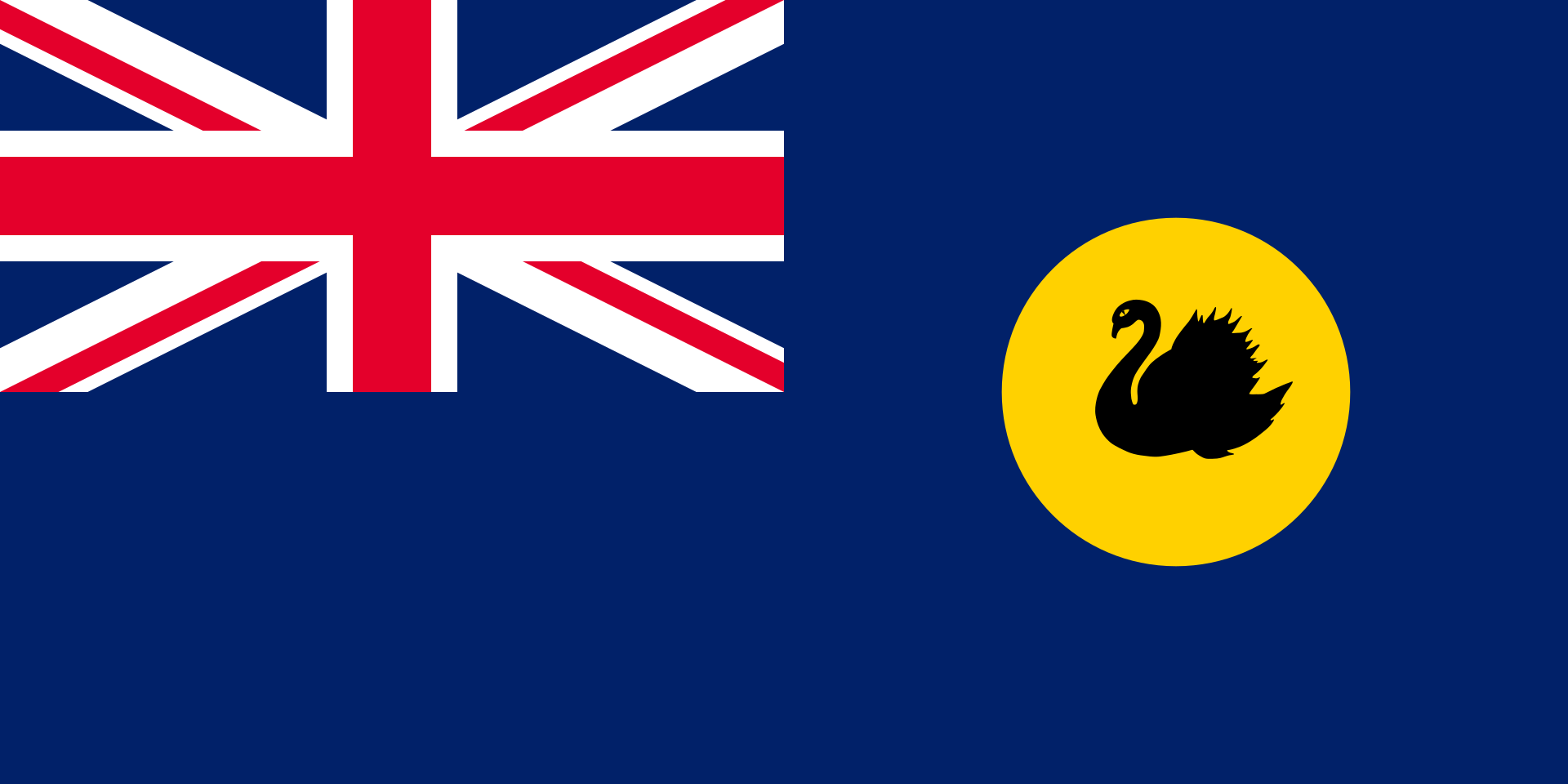 Western Australia-WA
Western Australia-WA

The America's Cup, affectionately known as the Auld Mug, is a trophy awarded to the winner of the America's Cup match races between two sailing yachts. One yacht, known as the defender, represents the yacht club that currently holds the America's Cup and the second yacht, known as the challenger, represents the yacht club that is challenging for the cup. The timing of each match is determined by an agreement between the defender and the challenger. The America's Cup is the oldest international sporting trophy.[1][2][3] It will next be raced for in the southern summer, in the early part of 2021.[4]
The cup was originally awarded in 1851 by the Royal Yacht Squadron for a race around the Isle of Wight in the United Kingdom, which was won by the schooner America. The trophy, originally named the '£100 Cup', was renamed the America's Cup after the yacht and was donated to the New York Yacht Club (NYYC) under the terms of the Deed of Gift, which made the cup available for perpetual international competition.
Any yacht club that meets the requirements specified in the deed of gift has the right to challenge the yacht club that holds the cup. If the challenging club wins the match, it gains stewardship of the cup.
The history and prestige associated with the America's Cup attracts not only the world's top sailors and yacht designers but also the involvement of wealthy entrepreneurs and sponsors. It is a test not only of sailing skill and boat and sail design, but also of fundraising and management skills.
The trophy was held by the NYYC from 1857 (when the syndicate that won the cup donated the trophy to the club) until 1983. The NYYC successfully defended the trophy twenty-four times in a row before being defeated by the Royal Perth Yacht Club, represented by the yacht Australia II. The NYYC's reign was the longest winning streak (in terms of date) in the history of all sports.[5]
From the first defence of the cup in 1870 through the twentieth defence in 1967, there was always only one challenger. In 1970, for the first time, there were multiple challengers, so the NYYC agreed that the challengers could run a selection series with the winner becoming the official challenger and competing against the defender in the America's Cup match. Since 1983, Louis Vuitton has sponsored the Louis Vuitton Cup as a prize for the winner of the challenger selection series.
Early matches for the cup were raced between yachts 65–90 ft (20–27 m) on the waterline owned by wealthy sportsmen. This culminated with the J-Class regattas of the 1930s. After World War II and almost twenty years without a challenge, the NYYC made changes to the deed of gift to allow smaller, less expensive 12-metre class yachts to compete; this class was used from 1958 until 1987. It was replaced in 1990 by the International America’s Cup Class which was used until 2007.
After a long legal battle, the 2010 America's Cup was raced in 90 ft (27 m) waterline multihull yachts in a best of three "deed of gift" match in Valencia, Spain. The victorious Golden Gate Yacht Club then elected to race the 2013 America's Cup in AC72 foiling, wing-sail catamarans. Golden Gate Yacht Club successfully defended the cup. The 35th America's Cup match was announced to be sailed in 50 ft foiling catamarans.[6]
The history of the America's Cup has included legal battles and disputes over rule changes including most recently over the rule changes for the 2017 America's Cup.[7]
The America's Cup is currently held by the Royal New Zealand Yacht Squadron,[8] who will stage the 36th defence of the Cup in 2021.
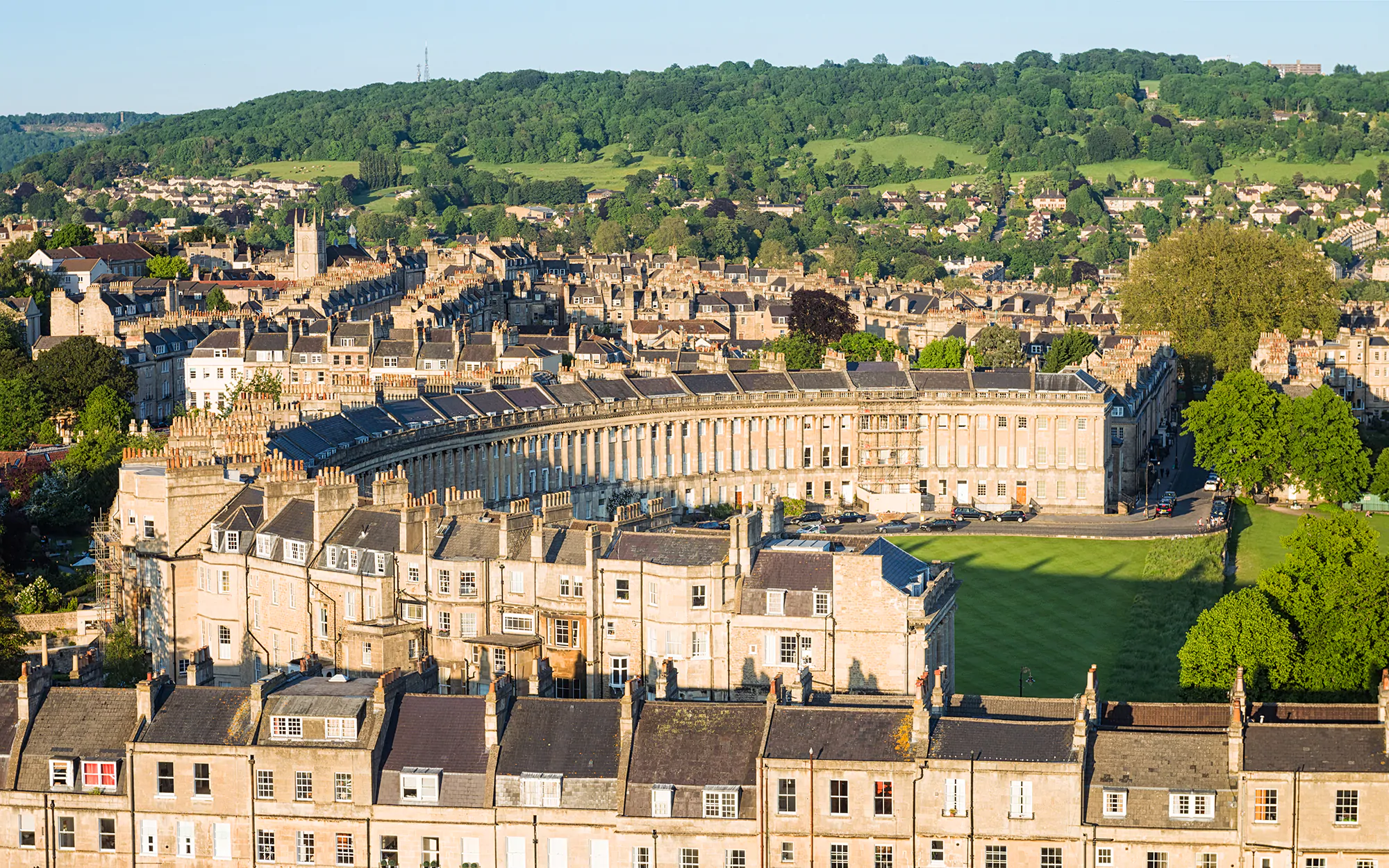
Bath (/bɑːθ/ ( listen) or /bæθ/ (
listen) or /bæθ/ ( listen))[2] is the largest city in the county of Somerset,[3] England, known for and named after its Roman-built baths. In 2019, the population was 101,106.[3] Bath is in the valley of the River Avon, 97 miles (156 km) west of London and 11 miles (18 km) southeast of Bristol. The city became a World Heritage Site in 1987, and was later added to the transnational World Heritage Site known as the "Great Spa Towns of Europe" in 2021.
listen))[2] is the largest city in the county of Somerset,[3] England, known for and named after its Roman-built baths. In 2019, the population was 101,106.[3] Bath is in the valley of the River Avon, 97 miles (156 km) west of London and 11 miles (18 km) southeast of Bristol. The city became a World Heritage Site in 1987, and was later added to the transnational World Heritage Site known as the "Great Spa Towns of Europe" in 2021.
The city became a spa with the Latin name Aquae Sulis ("the waters of Sulis") c. 60 AD when the Romans built baths and a temple in the valley of the River Avon, although hot springs were known even before then.
Bath Abbey was founded in the 7th century and became a religious centre; the building was rebuilt in the 12th and 16th centuries. In the 17th century, claims were made for the curative properties of water from the springs, and Bath became popular as a spa town in the Georgian era. Georgian architecture, crafted from Bath stone, includes the Royal Crescent, Circus, Pump Room and Assembly Rooms where Beau Nash presided over the city's social life from 1705 until his death in 1761.
Many of the streets and squares were laid out by John Wood, the Elder, and in the 18th century the city became fashionable and the population grew. Jane Austen lived in Bath in the early 19th century. Further building was undertaken in the 19th century and following the Bath Blitz in World War II. Bath became part of the county of Avon in 1974, and, following Avon's abolition in 1996, has been the principal centre of Bath and North East Somerset.
Bath has up to 1.3 million yearly visitors,[4] making it one of ten English cities visited most by overseas tourists.[5][6] Attractions include the spas, canal boat tours, Royal Crescent, Bath Skyline, Parade Gardens and Royal Victoria Park which hosts carnivals and seasonal events. Shopping areas include SouthGate shopping centre, The Corridor arcade and artisan shops at Walcot, Milsom, Stall and York Streets. There are theatres, including the Theatre Royal, as well as several museums including the Museum of Bath Architecture, the Victoria Art Gallery, the Museum of East Asian Art, the Herschel Museum of Astronomy, Fashion Museum, and the Holburne Museum. The city has two universities – the University of Bath and Bath Spa University – with Bath College providing further education. Sporting clubs include Bath Rugby and Bath City F.C. The city is also home to software, publishing and service-oriented industries such as Future plc and Rotork.
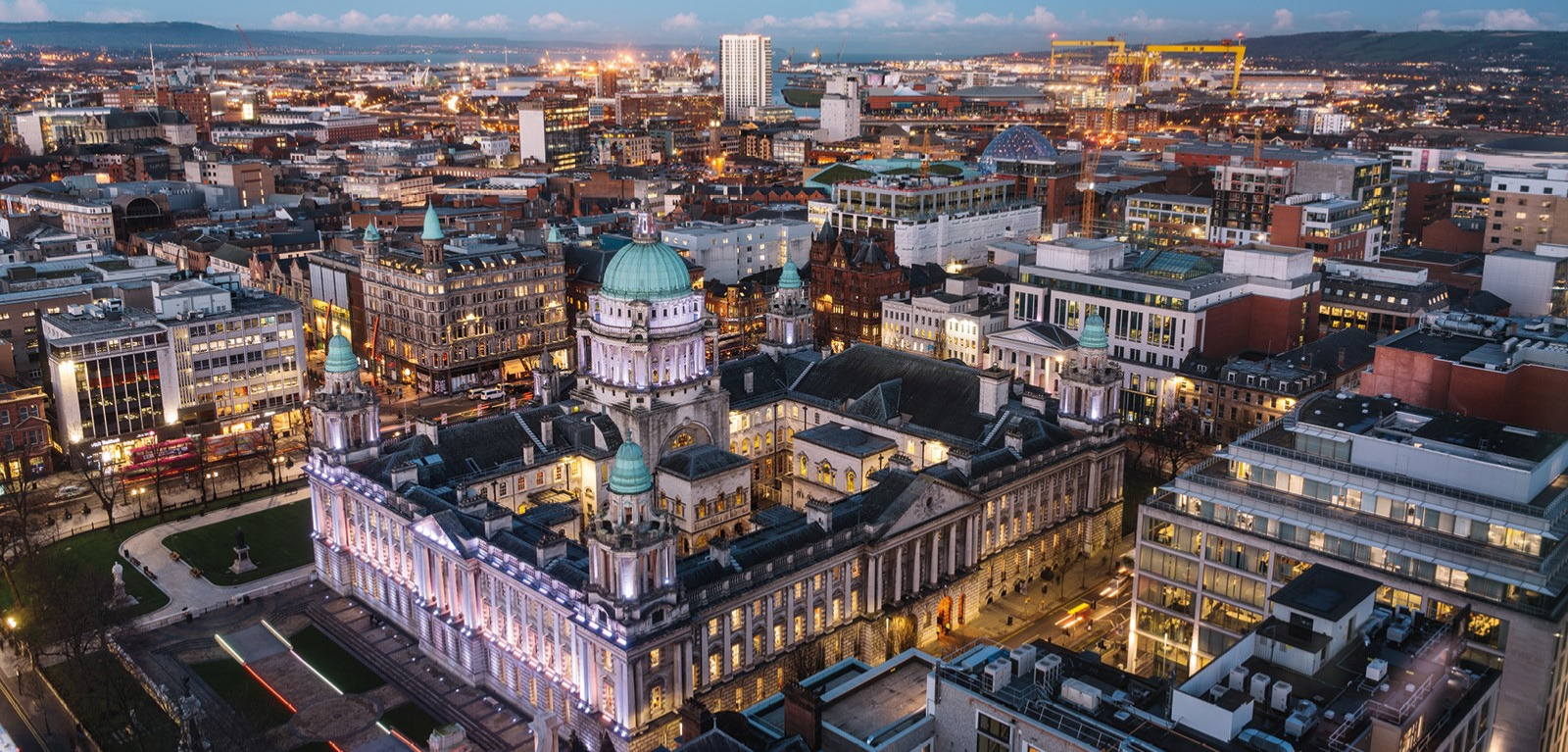
Belfast (UK: /ˈbɛlfɑːst/ BEL-fahst, elsewhere /ˈbɛlfæst/; from Irish: Béal Feirste [bʲeːlˠ ˈfʲɛɾˠ(ə)ʃtʲə], meaning 'mouth of the sand-bank ford'[4]) is the capital and largest city of Northern Ireland, standing on the banks of the River Lagan on the east coast. It is the 12th-largest city in the United Kingdom[5] and the second-largest on the island of Ireland. It had a population of 343,542 in 2019.[2] Belfast suffered greatly during the violence that accompanied the partition of Ireland, and especially during the more recent conflict known as the Troubles.
By the early 19th century, Belfast was a major port. It played an important role in the Industrial Revolution in Ireland, becoming briefly the biggest linen-producer in the world, earning it the nickname "Linenopolis".[6] By the time it was granted city status in 1888, it was a major centre of Irish linen production, tobacco-processing and rope-making. Shipbuilding was also a key industry; the Harland and Wolff shipyard, which built the RMS Titanic, was the world's largest shipyard.[7] Belfast as of 2019 has a major aerospace and missiles industry. Industrialisation, and the inward migration[8] it brought, made Belfast Northern Ireland's biggest city. Following the partition of Ireland in 1921, Belfast became the seat of government for Northern Ireland. Belfast's status as a global industrial centre ended in the decades after the Second World War.
Belfast is still a port with commercial and industrial docks, including the Harland and Wolff shipyard, dominating the Belfast Lough shoreline. It is served by two airports: George Best Belfast City Airport, 3 miles (5 kilometres) from the city centre, and Belfast International Airport 15 miles (24 kilometres) west of the city. The Globalization and World Cities Research Network (GaWC) listed Belfast as a Gamma + global city in 2020.
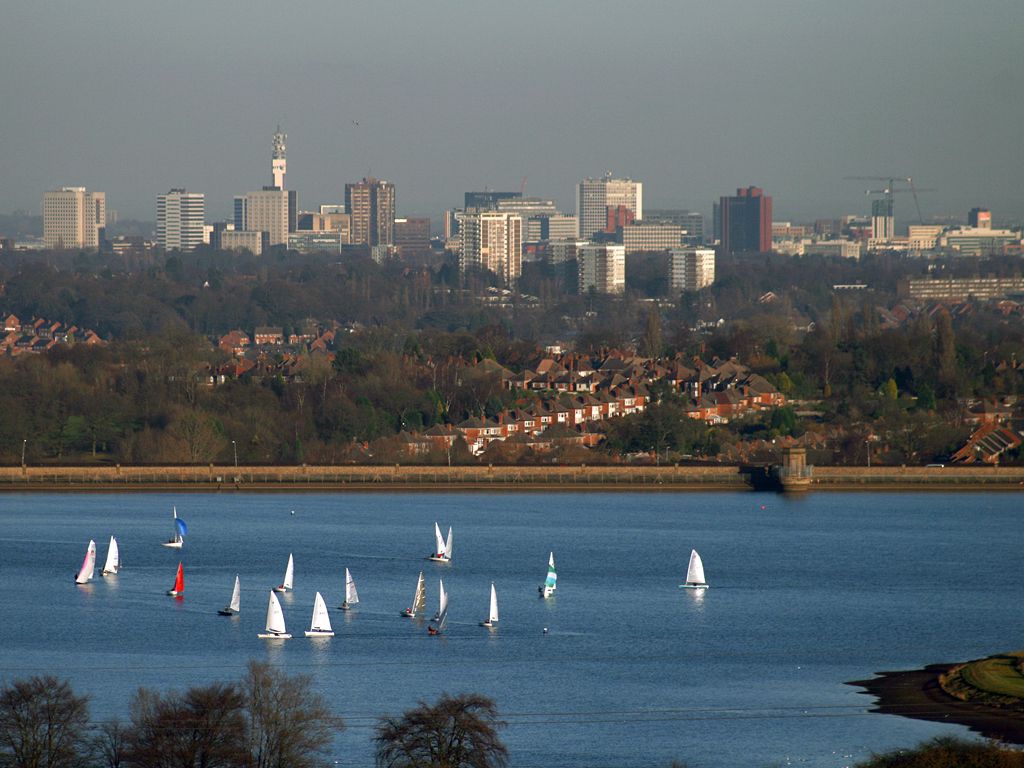
Birmingham (/ˈbɜːrmɪŋəm/ ( listen)[3][4][5] BUR-ming-əm) is a major city and metropolitan borough in the West Midlands, England. It is the second-largest city, second-largest metropolitan area and third-largest urban area in the United Kingdom,[b][6] with roughly 1.2 million inhabitants within the city area, 2.8 million inhabitants within the urban area,[7] and 4.3 million inhabitants within the metropolitan area.[8] The city proper is the most populated English local government district.[9] Birmingham is commonly referred to as the "second city of the United Kingdom".[10][11]
listen)[3][4][5] BUR-ming-əm) is a major city and metropolitan borough in the West Midlands, England. It is the second-largest city, second-largest metropolitan area and third-largest urban area in the United Kingdom,[b][6] with roughly 1.2 million inhabitants within the city area, 2.8 million inhabitants within the urban area,[7] and 4.3 million inhabitants within the metropolitan area.[8] The city proper is the most populated English local government district.[9] Birmingham is commonly referred to as the "second city of the United Kingdom".[10][11]
Located in the West Midlands county and region in England, approximately 100 miles (160 km) from Central London, Birmingham, as one of the United Kingdom's major cities, is considered to be the social, cultural, financial, and commercial centre of the Midlands. Distinctively, Birmingham only has small rivers flowing through it, mainly the River Tame and its tributaries River Rea and River Cole – one of the closest main rivers is the Severn, approximately 20 miles (32 km) west of the city centre.
Historically a market town in Warwickshire in the medieval period, Birmingham grew during the 18th century during the Midlands Enlightenment and during the Industrial Revolution, which saw advances in science, technology, and economic development, producing a series of innovations that laid many of the foundations of modern industrial society.[12] By 1791, it was being hailed as "the first manufacturing town in the world".[13] Birmingham's distinctive economic profile, with thousands of small workshops practising a wide variety of specialised and highly skilled trades, encouraged exceptional levels of creativity and innovation and provided an economic base for prosperity that was to last into the final quarter of the 20th century. The Watt steam engine was invented in Birmingham.[14]
The resulting high level of social mobility also fostered a culture of political radicalism which, under leaders from Thomas Attwood to Joseph Chamberlain, was to give it a political influence unparalleled in Britain outside London, and a pivotal role in the development of British democracy.[15] From the summer of 1940 to the spring of 1943, Birmingham was bombed heavily by the German Luftwaffe in what is known as the Birmingham Blitz. The damage done to the city's infrastructure, in addition to a deliberate policy of demolition and new building by planners, led to extensive urban regeneration in subsequent decades.
Birmingham's economy is now dominated by the service sector.[16] The city is a major international commercial centre and an important transport, retail, events and conference hub. Its metropolitan economy is the second-largest in the United Kingdom with a GDP of $121.1bn (2014).[2] Its five universities,[17] including the University of Birmingham, make it the largest centre of higher education in the country outside London.[18] Birmingham's major cultural institutions – the City of Birmingham Symphony Orchestra, the Birmingham Royal Ballet, the Birmingham Repertory Theatre, the Library of Birmingham and the Barber Institute of Fine Arts – enjoy international reputations,[19] and the city has vibrant and influential grassroots art, music, literary and culinary scenes.[20] The city will host the 2022 Commonwealth Games.[21] As of 2014, Birmingham is the fourth-most visited city in the UK by people from foreign nations.
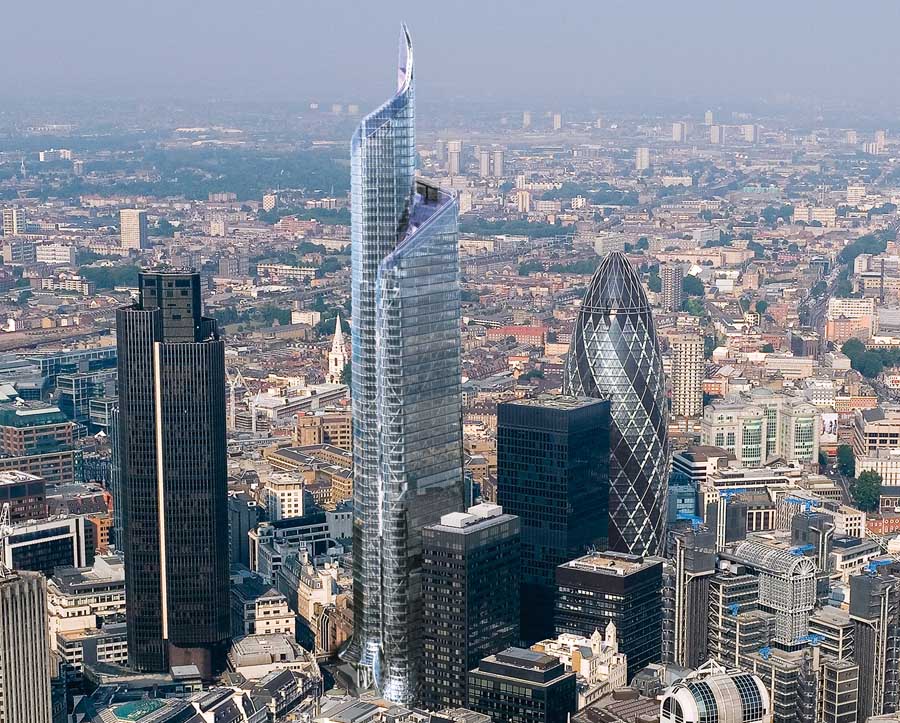
22 Bishopsgate, also known as Twentytwo, is a commercial skyscraper in London, United Kingdom. Completed in 2020, it occupies a prominent site in Bishopsgate, in the City of London financial district, and stands at 278 m (912 ft) tall with 62 storeys. The project replaces an earlier plan for a 288 m (945 ft) tower named The Pinnacle, on which construction was started in 2008 but suspended in 2012 following the Great Recession, with only the concrete core of the first seven storeys. The structure was later subjected to a re-design, out of which it became known by its postal address, 22 Bishopsgate.[4]
Under the original plans, The Pinnacle was to become the second-tallest building in both the United Kingdom and the European Union after The Shard, also in London. The Economic Development Corporation of Saudi Arabia and its development manager, Arab Investments, which largely funded the construction, invested £500 million in it in return for a majority stake in the structure.[5] However, the build was put on hold due to a lack of additional funding and letting commitments.
In 2013 it was reported that a review of the design and construction process, undertaken by original architects Kohn Pedersen Fox, agents CBRE and the developers, had been completed, with the building's "helter skelter" style exterior set to be retained.[6] In 2015, the site was sold to a consortium led by Axa Real Estate and a re-design with a simpler exterior, ultimately excluding the costly "helter skelter" shape, was submitted for public consultation before application for planning permission.
In April 2016, it was confirmed that property company Lipton Rogers and its joint venture partner, Axa IM – Real Assets, would complete the £1bn development in 2019. At 278 metres, the building was set to be the tallest in the City of London at that time and, due to potential loss of light to surrounding buildings, there had been objections to the development from several parties. However, City of London granted permission after considering the potential benefits of developing the building including the introduction of more floorspace to the area and the creation of new jobs.[7]
In 2017, plans were approved which redesigned the building and reduced its height further to 255 m due to concerns that the cranes used for its construction could interfere with the flight paths of the nearby London City Airport.[8][9] However, these plans were withdrawn after approval was granted for the previous 278-metre design.

The British Council is a British organisation specialising in international cultural and educational opportunities. It works in over 100 countries: promoting a wider knowledge of the United Kingdom and the English language (and the Welsh language in Argentina[3]); encouraging cultural, scientific, technological and educational co-operation with the United Kingdom. The organisation has been called a soft power extension of UK foreign policy,[4][5] as well as a tool for propaganda.[6]
The British Council is governed by a Royal Charter. It is also a public corporation and an executive nondepartmental public body (NDPB), sponsored by the Foreign, Commonwealth and Development Office. Its headquarters are in Stratford, London. Its Chairman is Stevie Spring[7] and its Chief Executive is Scott McDonald.
The British Museum, in the Bloomsbury area of London, United Kingdom, is a public institution dedicated to human history, art and culture. Its permanent collection of some eight million works is among the largest and most comprehensive in existence,[3] having been widely sourced during the era of the British Empire. It documents the story of human culture from its beginnings to the present.[a] It was the first public national museum in the world.[4]
The British Museum was established in 1753, largely based on the collections of the Irish physician and scientist Sir Hans Sloane.[5] It first opened to the public in 1759, in Montagu House, on the site of the current building. Its expansion over the following 250 years was largely a result of expanding British colonisation and has resulted in the creation of several branch institutions, the first being the Natural History Museum in 1881.
In 1973, the British Library Act 1972 detached the library department from the British Museum, but it continued to host the now separated British Library in the same Reading Room and building as the museum until 1997. The museum is a non-departmental public body sponsored by the Department for Digital, Culture, Media and Sport, and as with all national museums in the UK it charges no admission fee, except for loan exhibitions.[6]
Its ownership of some of its most famous objects originating in other countries is disputed and remains the subject of international controversy, most notably in the case of the Parthenon Marbles.[7]
Sir Hans Sloane
Although today principally a museum of cultural art objects and antiquities, the British Museum was founded as a "universal museum". Its foundations lie in the will of the Irish physician and naturalist Sir Hans Sloane (1660–1753), a London-based doctor and scientist from Ulster. During the course of his lifetime, and particularly after he married the widow of a wealthy Jamaican planter[8], Sloane gathered a large collection of curiosities and, not wishing to see his collection broken up after death, he bequeathed it to King George II, for the nation, for a sum of £20,000.[9]
At that time, Sloane's collection consisted of around 71,000 objects of all kinds[10] including some 40,000 printed books, 7,000 manuscripts, extensive natural history specimens including 337 volumes of dried plants, prints and drawings including those by Albrecht Dürer and antiquities from Sudan, Egypt, Greece, Rome, the Ancient Near and Far East and the Americas.[11]
Foundation (1753)
On 7 June 1753, King George II gave his Royal Assent to the Act of Parliament which established the British Museum.[b] The British Museum Act 1753 also added two other libraries to the Sloane collection, namely the Cottonian Library, assembled by Sir Robert Cotton, dating back to Elizabethan times, and the Harleian Library, the collection of the Earls of Oxford. They were joined in 1757 by the "Old Royal Library", now the Royal manuscripts, assembled by various British monarchs. Together these four "foundation collections" included many of the most treasured books now in the British Library[13] including the Lindisfarne Gospels and the sole surviving manuscript of Beowulf.[c]
The British Museum was the first of a new kind of museum – national, belonging to neither church nor king, freely open to the public and aiming to collect everything. Sloane's collection, while including a vast miscellany of objects, tended to reflect his scientific interests.[14] The addition of the Cotton and Harley manuscripts introduced a literary and antiquarian element and meant that the British Museum now became both National Museum and library.[15]
Cabinet of curiosities (1753–1778)
The body of trustees decided on a converted 17th-century mansion, Montagu House, as a location for the museum, which it bought from the Montagu family for £20,000. The trustees rejected Buckingham House, on the site now occupied by Buckingham Palace, on the grounds of cost and the unsuitability of its location.[16][d]
With the acquisition of Montagu House, the first exhibition galleries and reading room for scholars opened on 15 January 1759.[17] At this time, the largest parts of collection were the library, which took up the majority of the rooms on the ground floor of Montagu House and the natural history objects, which took up an entire wing on the second state storey of the building. In 1763, the trustees of the British Museum, under the influence of Peter Collinson and William Watson, employed the former student of Carl Linnaeus, Daniel Solander to reclassify the natural history collection according to the Linnaean system, thereby making the Museum a public centre of learning accessible to the full range of European natural historians.[18] In 1823, King George IV[19] gave the King's Library assembled by George III, and Parliament gave the right to a copy of every book published in the country, thereby ensuring that the museum's library would expand indefinitely. During the few years after its foundation the British Museum received several further gifts, including the Thomason Collection of Civil War Tracts and David Garrick's library of 1,000 printed plays. The predominance of natural history, books and manuscripts began to lessen when in 1772 the museum acquired for £8,410 its first significant antiquities in Sir William Hamilton's "first" collection of Greek vases.[20]
Indolence and energy (1778–1800)
From 1778, a display of objects from the South Seas brought back from the round-the-world voyages of Captain James Cook and the travels of other explorers fascinated visitors with a glimpse of previously unknown lands. The bequest of a collection of books, engraved gems, coins, prints and drawings by Clayton Mordaunt Cracherode in 1800 did much to raise the museum's reputation; but Montagu House became increasingly crowded and decrepit and it was apparent that it would be unable to cope with further expansion.[21]
The museum's first notable addition towards its collection of antiquities, since its foundation, was by Sir William Hamilton (1730–1803), British Ambassador to Naples, who sold his collection of Greek and Roman artefacts to the museum in 1784 together with a number of other antiquities and natural history specimens. A list of donations to the museum, dated 31 January 1784, refers to the Hamilton bequest of a "Colossal Foot of an Apollo in Marble". It was one of two antiquities of Hamilton's collection drawn for him by Francesco Progenie, a pupil of Pietro Fabris, who also contributed a number of drawings of Mount Vesuvius sent by Hamilton to the Royal Society in London.
Growth and change (1800–1825)
In the early 19th century the foundations for the extensive collection of sculpture began to be laid and Greek, Roman and Egyptian artefacts dominated the antiquities displays. After the defeat of the French campaign in the Battle of the Nile, in 1801, the British Museum acquired more Egyptian sculptures and in 1802 King George III presented the Rosetta Stone – key to the deciphering of hieroglyphs.[22] Gifts and purchases from Henry Salt, British consul general in Egypt, beginning with the Colossal bust of Ramesses II in 1818, laid the foundations of the collection of Egyptian Monumental Sculpture.[23] Many Greek sculptures followed, notably the first purpose-built exhibition space, the Charles Towneley collection, much of it Roman Sculpture, in 1805. In 1806, Thomas Bruce, 7th Earl of Elgin, ambassador to the Ottoman Empire from 1799 to 1803 removed the large collection of marble sculptures from the Parthenon, on the Acropolis in Athens and transferred them to the UK. In 1816 these masterpieces of western art, were acquired by The British Museum by Act of Parliament and deposited in the museum thereafter.[24] The collections were supplemented by the Bassae frieze from Phigaleia, Greece in 1815. The Ancient Near Eastern collection also had its beginnings in 1825 with the purchase of Assyrian and Babylonian antiquities from the widow of Claudius James Rich.[25]
In 1802 a buildings committee was set up to plan for expansion of the museum, and further highlighted by the donation in 1822 of the King's Library, personal library of King George III's, comprising 65,000 volumes, 19,000 pamphlets, maps, charts and topographical drawings.[26] The neoclassical architect, Sir Robert Smirke, was asked to draw up plans for an eastern extension to the museum "... for the reception of the Royal Library, and a Picture Gallery over it ..."[27] and put forward plans for today's quadrangular building, much of which can be seen today. The dilapidated Old Montagu House was demolished and work on the King's Library Gallery began in 1823. The extension, the East Wing, was completed by 1831. However, following the founding of the National Gallery, London in 1824,[e] the proposed Picture Gallery was no longer needed, and the space on the upper floor was given over to the Natural history collections.[28]
The largest building site in Europe (1825–1850)
The museum became a construction site as Sir Robert Smirke's grand neo-classical building gradually arose. The King's Library, on the ground floor of the East Wing, was handed over in 1827, and was described as one of the finest rooms in London. Although it was not fully open to the general public until 1857, special openings were arranged during The Great Exhibition of 1851. In spite of dirt and disruption the collections grew, outpacing the new building.[citation needed]
In 1840, the museum became involved in its first overseas excavations, Charles Fellows's expedition to Xanthos, in Asia Minor, whence came remains of the tombs of the rulers of ancient Lycia, among them the Nereid and Payava monuments. In 1857, Charles Newton was to discover the 4th-century BC Mausoleum of Halikarnassos, one of the Seven Wonders of the Ancient World. In the 1840s and 1850s the museum supported excavations in Assyria by A.H. Layard and others at sites such as Nimrud and Nineveh. Of particular interest to curators was the eventual discovery of Ashurbanipal's great library of cuneiform tablets, which helped to make the museum a focus for Assyrian studies.[29]
Sir Thomas Grenville (1755–1846), a trustee of the British Museum from 1830, assembled a library of 20,240 volumes, which he left to the museum in his will. The books arrived in January 1847 in twenty-one horse-drawn vans. The only vacant space for this large library was a room originally intended for manuscripts, between the Front Entrance Hall and the Manuscript Saloon. The books remained here until the British Library moved to St Pancras in 1998.
Collecting from the wider world (1850–1875)
The opening of the forecourt in 1852 marked the completion of Robert Smirke's 1823 plan, but already adjustments were having to be made to cope with the unforeseen growth of the collections. Infill galleries were constructed for Assyrian sculptures and Sydney Smirke's Round Reading Room, with space for a million books, opened in 1857. Because of continued pressure on space the decision was taken to move natural history to a new building in South Kensington, which would later become the British Museum of Natural History.
Roughly contemporary with the construction of the new building was the career of a man sometimes called the "second founder" of the British Museum, the Italian librarian Anthony Panizzi. Under his supervision, the British Museum Library (now part of the British Library) quintupled in size and became a well-organised institution worthy of being called a national library, the largest library in the world after the National Library of Paris.[15] The quadrangle at the centre of Smirke's design proved to be a waste of valuable space and was filled at Panizzi's request by a circular Reading Room of cast iron, designed by Smirke's brother, Sydney Smirke.[30]
Until the mid-19th century, the museum's collections were relatively circumscribed but, in 1851, with the appointment to the staff of Augustus Wollaston Franks to curate the collections, the museum began for the first time to collect British and European medieval antiquities, prehistory, branching out into Asia and diversifying its holdings of ethnography. A real coup for the museum was the purchase in 1867, over French objections, of the Duke of Blacas's wide-ranging and valuable collection of antiquities. Overseas excavations continued and John Turtle Wood discovered the remains of the 4th century BC Temple of Artemis at Ephesos, another Wonder of the Ancient World.[31]
Scholarship and legacies (1875–1900)
The natural history collections were an integral part of the British Museum until their removal to the new British Museum of Natural History in 1887, nowadays the Natural History Museum. With the departure and the completion of the new White Wing (fronting Montague Street) in 1884, more space was available for antiquities and ethnography and the library could further expand. This was a time of innovation as electric lighting was introduced in the Reading Room and exhibition galleries.[32]
The William Burges collection of armoury was bequeathed to the museum in 1881. In 1882, the museum was involved in the establishment of the independent Egypt Exploration Fund (now Society) the first British body to carry out research in Egypt. A bequest from Miss Emma Turner in 1892 financed excavations in Cyprus. In 1897 the death of the great collector and curator, A. W. Franks, was followed by an immense bequest of 3,300 finger rings, 153 drinking vessels, 512 pieces of continental porcelain, 1,500 netsuke, 850 inro, over 30,000 bookplates and miscellaneous items of jewellery and plate, among them the Oxus Treasure.[33]
In 1898 Baron Ferdinand de Rothschild bequeathed the Waddesdon Bequest, the glittering contents from his New Smoking Room at Waddesdon Manor. This consisted of almost 300 pieces of objets d'art et de vertu which included exquisite examples of jewellery, plate, enamel, carvings, glass and maiolica, among them the Holy Thorn Reliquary, probably created in the 1390s in Paris for John, Duke of Berry. The collection was in the tradition of a schatzkammer or treasure house such as those formed by the Renaissance princes of Europe.[34] Baron Ferdinand's will was most specific, and failure to observe the terms would make it void, the collection should be
placed in a special room to be called the Waddesdon Bequest Room separate and apart from the other contents of the Museum and thenceforth for ever thereafter, keep the same in such room or in some other room to be substituted for it.[34]
These terms are still observed, and the collection occupies room 45, although it moved to new quarters in 2015.
New century, new building (1900–1925)
By the last years of the 19th century, The British Museum's collections had increased to the extent that its building was no longer large enough. In 1895 the trustees purchased the 69 houses surrounding the museum with the intention of demolishing them and building around the west, north and east sides of the museum. The first stage was the construction of the northern wing beginning 1906.
All the while, the collections kept growing. Emil Torday collected in Central Africa, Aurel Stein in Central Asia, D.G. Hogarth, Leonard Woolley and T. E. Lawrence excavated at Carchemish. Around this time, the American collector and philanthropist J Pierpont Morgan donated a substantial number of objects to the museum,[35] including William Greenwell's collection of prehistoric artefacts from across Europe which he had purchased for £10,000 in 1908. Morgan had also acquired a major part of Sir John Evans's coin collection, which was later sold to the museum by his son John Pierpont Morgan Junior in 1915. In 1918, because of the threat of wartime bombing, some objects were evacuated via the London Post Office Railway to Holborn, the National Library of Wales (Aberystwyth) and a country house near Malvern. On the return of antiquities from wartime storage in 1919 some objects were found to have deteriorated. A conservation laboratory was set up in May 1920 and became a permanent department in 1931. It is today the oldest in continuous existence.[36] In 1923, the British Museum welcomed over one million visitors.
Disruption and reconstruction (1925–1950)
New mezzanine floors were constructed and book stacks rebuilt in an attempt to cope with the flood of books. In 1931, the art dealer Sir Joseph Duveen offered funds to build a gallery for the Parthenon sculptures. Designed by the American architect John Russell Pope, it was completed in 1938. The appearance of the exhibition galleries began to change as dark Victorian reds gave way to modern pastel shades.[f] However, in August 1939, due to the imminence of war and the likelihood of air-raids, the Parthenon Sculptures, along with the museum's most valued collections, were dispersed to secure basements, country houses, Aldwych Underground station, the National Library of Wales and a quarry. The evacuation was timely, for in 1940 the Duveen Gallery was severely damaged by bombing.[38] Meanwhile, prior to the war, the Nazis had sent a researcher to the British Museum for several years with the aim of "compiling an anti-Semitic history of Anglo-Jewry."[39] After the war, the museum continued to collect from all countries and all centuries: among the most spectacular additions were the 2600 BC Mesopotamian treasure from Ur, discovered during Leonard Woolley's 1922–34 excavations. Gold, silver and garnet grave goods from the Anglo-Saxon ship burial at Sutton Hoo (1939) and late Roman silver tableware from Mildenhall, Suffolk (1946). The immediate post-war years were taken up with the return of the collections from protection and the restoration of the museum after the Blitz. Work also began on restoring the damaged Duveen Gallery.
A new public face (1950–1975)
In 1953, the museum celebrated its bicentenary. Many changes followed: the first full-time in house designer and publications officer were appointed in 1964, the Friends organisation was set up in 1968, an Education Service established in 1970 and publishing house in 1973. In 1963, a new Act of Parliament introduced administrative reforms. It became easier to lend objects, the constitution of the board of trustees changed and the Natural History Museum became fully independent. By 1959 the Coins and Medals office suite, completely destroyed during the war, was rebuilt and re-opened, attention turned towards the gallery work with new tastes in design leading to the remodelling of Robert Smirke's Classical and Near Eastern galleries.[40] In 1962 the Duveen Gallery was finally restored and the Parthenon Sculptures were moved back into it, once again at the heart of the museum.[g]
By the 1970s the museum was again expanding. More services for the public were introduced; visitor numbers soared, with the temporary exhibition "Treasures of Tutankhamun" in 1972, attracting 1,694,117 visitors, the most successful in British history. In the same year the Act of Parliament establishing the British Library was passed, separating the collection of manuscripts and printed books from the British Museum. This left the museum with antiquities; coins, medals and paper money; prints & drawings; and ethnography. A pressing problem was finding space for additions to the library which now required an extra 1 1⁄4 miles (2.0 km) of shelving each year. The Government suggested a site at St Pancras for the new British Library but the books did not leave the museum until 1997.
The Great Court emerges (1975–2000)
The departure of the British Library to a new site at St Pancras, finally achieved in 1998, provided the space needed for the books. It also created the opportunity to redevelop the vacant space in Robert Smirke's 19th-century central quadrangle into the Queen Elizabeth II Great Court – the largest covered square in Europe – which opened in 2000. The ethnography collections, which had been housed in the short-lived Museum of Mankind at 6 Burlington Gardens from 1970, were returned to new purpose-built galleries in the museum in 2000.
The museum again readjusted its collecting policies as interest in "modern" objects: prints, drawings, medals and the decorative arts reawakened. Ethnographical fieldwork was carried out in places as diverse as New Guinea, Madagascar, Romania, Guatemala and Indonesia and there were excavations in the Near East, Egypt, Sudan and the UK. The Weston Gallery of Roman Britain, opened in 1997, displayed a number of recently discovered hoards which demonstrated the richness of what had been considered an unimportant part of the Roman Empire. The museum turned increasingly towards private funds for buildings, acquisitions and other purposes.[42]
The British Museum today
Today the museum no longer houses collections of natural history, and the books and manuscripts it once held now form part of the independent British Library. The museum nevertheless preserves its universality in its collections of artefacts representing the cultures of the world, ancient and modern. The original 1753 collection has grown to over thirteen million objects at the British Museum, 70 million at the Natural History Museum and 150 million at the British Library.
The Round Reading Room, which was designed by the architect Sydney Smirke, opened in 1857. For almost 150 years researchers came here to consult the museum's vast library. The Reading Room closed in 1997 when the national library (the British Library) moved to a new building at St Pancras. Today it has been transformed into the Walter and Leonore Annenberg Centre.
With the bookstacks in the central courtyard of the museum empty, the demolition for Lord Foster's glass-roofed Great Court could begin. The Great Court, opened in 2000, while undoubtedly improving circulation around the museum, was criticised for having a lack of exhibition space at a time when the museum was in serious financial difficulties and many galleries were closed to the public. At the same time the African collections that had been temporarily housed in 6 Burlington Gardens were given a new gallery in the North Wing funded by the Sainsbury family – with the donation valued at £25 million.[43]
As part of its very large website, the museum has the largest online database of objects in the collection of any museum in the world, with 2,000,000 individual object entries, 650,000 of them illustrated, online at the start of 2012.[44] There is also a "Highlights" database with longer entries on over 4,000 objects, and several specialised online research catalogues and online journals (all free to access).[45] In 2013 the museum's website received 19.5 millions visits, an increase of 47% from the previous year.[46]
In 2013 the museum received a record 6.7 million visitors, an increase of 20% from the previous year.[46] Popular exhibitions including "Life and Death in Pompeii and Herculaneum" and "Ice Age Art" are credited with helping fuel the increase in visitors.[47] Plans were announced in September 2014 to recreate the entire building along with all exhibits in the video game Minecraft in conjunction with members of the public.
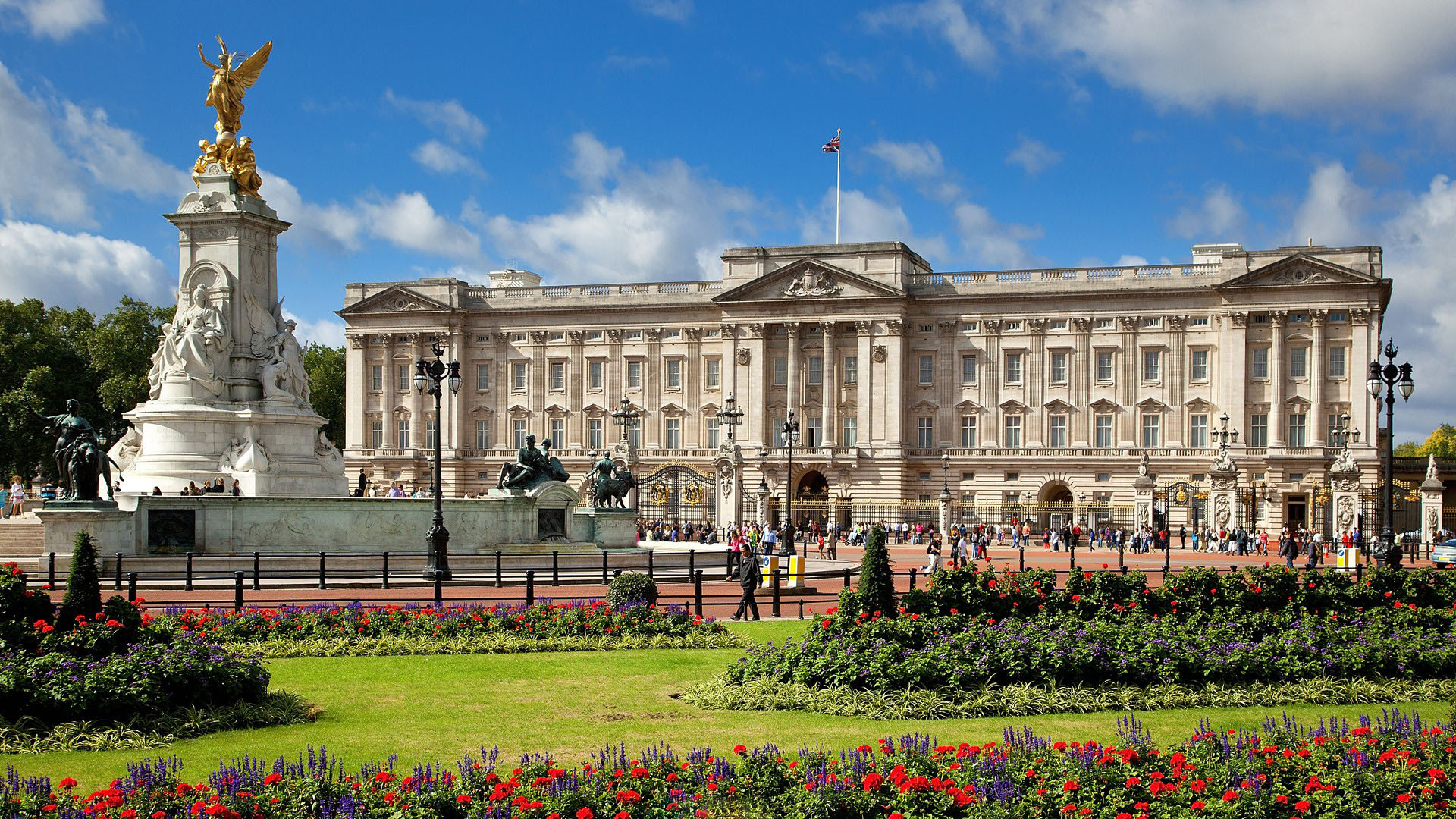
Buckingham Palace (UK: /ˈbʌkɪŋəm/)[1] is the London residence and administrative headquarters of the monarch of the United Kingdom.[a][2] Located in the City of Westminster, the palace is often at the centre of state occasions and royal hospitality. It has been a focal point for the British people at times of national rejoicing and mourning.
Originally known as Buckingham House, the building at the core of today's palace was a large townhouse built for the Duke of Buckingham in 1703 on a site that had been in private ownership for at least 150 years. It was acquired by King George III in 1761[3] as a private residence for Queen Charlotte and became known as The Queen's House. During the 19th century it was enlarged, principally by architects John Nash and Edward Blore, who constructed three wings around a central courtyard. Buckingham Palace became the London residence of the British monarch on the accession of Queen Victoria in 1837.
The last major structural additions were made in the late 19th and early 20th centuries, including the East Front, which contains the well-known balcony on which the British royal family traditionally congregates to greet crowds. A German bomb destroyed the palace chapel during the Second World War; the Queen's Gallery was built on the site and opened to the public in 1962 to exhibit works of art from the Royal Collection.
The original early-19th-century interior designs, many of which survive, include widespread use of brightly coloured scagliola and blue and pink lapis, on the advice of Sir Charles Long. King Edward VII oversaw a partial redecoration in a Belle Époque cream and gold colour scheme. Many smaller reception rooms are furnished in the Chinese regency style with furniture and fittings brought from the Royal Pavilion at Brighton and from Carlton House. The palace has 775 rooms, and the garden is the largest private garden in London. The state rooms, used for official and state entertaining, are open to the public each year for most of August and September and on some days in winter and spring.
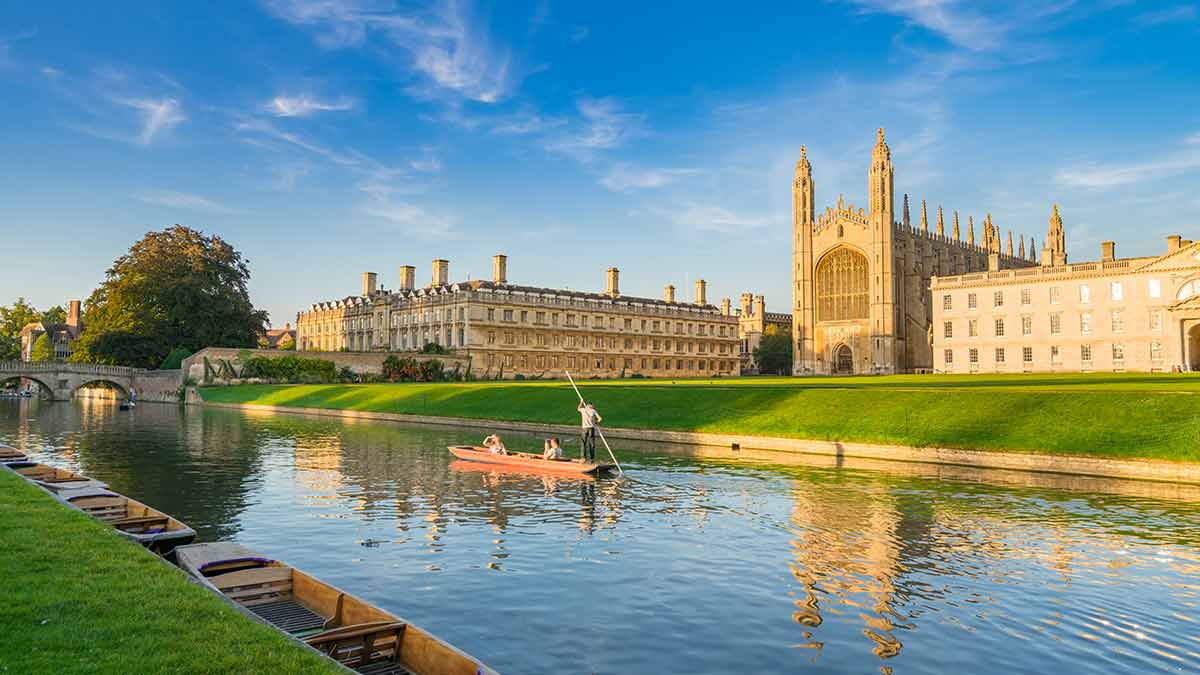
Cambridge (/ˈkeɪmbrɪdʒ/[2] KAYM-brij) is a university city and the county town of Cambridgeshire, England, on the River Cam approximately 55 miles (89 km) north of London. At the United Kingdom Census 2011, the population of the Cambridge built-up area (which is larger than the remit of Cambridge City Council) was 158,434 including 29,327 students.[3] Cambridge became an important trading centre during the Roman and Viking ages, and there is archaeological evidence of settlement in the area as early as the Bronze Age. The first town charters were granted in the 12th century, although modern city status was not officially conferred until 1951.
The University of Cambridge was founded in 1209.[4] The buildings of the university include King's College Chapel, Cavendish Laboratory, and the Cambridge University Library, one of the largest legal deposit libraries in the world. The city's skyline is dominated by several college buildings, along with the spire of the Our Lady and the English Martyrs Church, and the chimney of Addenbrooke's Hospital. Anglia Ruskin University, which evolved from the Cambridge School of Art and the Cambridgeshire College of Arts and Technology, also has its main campus in the city.
Cambridge is at the heart of the high-technology Silicon Fen with industries such as software and bioscience and many start-up companies born out of the university. Over 40 per cent of the workforce have a higher education qualification, more than twice the national average. The Cambridge Biomedical Campus, one of the largest biomedical research clusters in the world includes the headquarters of AstraZeneca, a hotel, and the relocated Royal Papworth Hospital.[5]
The first game of association football took place at Parker's Piece. The Strawberry Fair music and arts festival and Midsummer Fair are held on Midsummer Common, and the annual Cambridge Beer Festival takes place on Jesus Green. The city is adjacent to the M11 and A14 roads. Cambridge station is less than an hour from London King's Cross railway station.
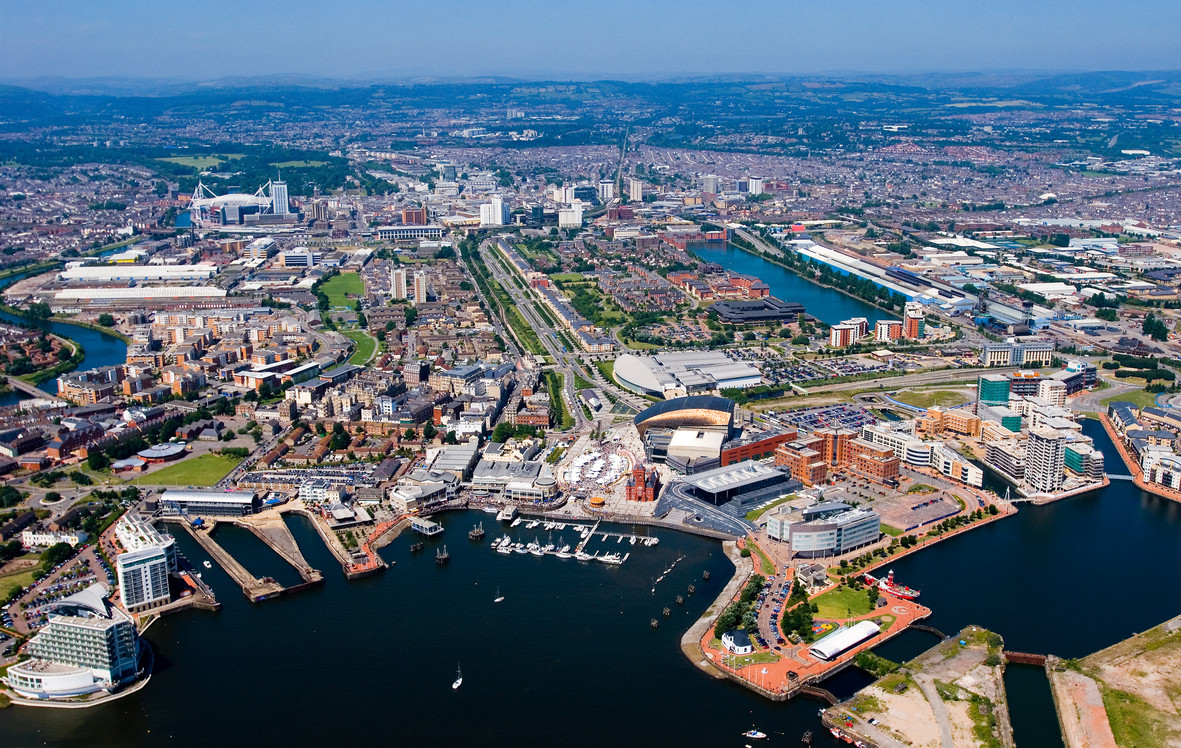
Cardiff (/ˈkɑːrdɪf/ ( listen); Welsh: Caerdydd [kairˈdiːð, kɑːɨrˈdɨːð] (
listen); Welsh: Caerdydd [kairˈdiːð, kɑːɨrˈdɨːð] ( listen)) is the capital of, and largest city in, Wales, and the eleventh-largest city in the United Kingdom. It is Wales's chief commercial centre, the base for most national cultural and sporting institutions, the Welsh national media, and the seat of the National Assembly for Wales. The unitary authority area's 2017 population was estimated to be 362,756.[1] Cardiff is a significant tourist centre and the most popular visitor destination in Wales with 21.3 million visitors in 2017.[5] In 2011, Cardiff was ranked sixth in the world in National Geographic's alternative tourist destinations.[6]
listen)) is the capital of, and largest city in, Wales, and the eleventh-largest city in the United Kingdom. It is Wales's chief commercial centre, the base for most national cultural and sporting institutions, the Welsh national media, and the seat of the National Assembly for Wales. The unitary authority area's 2017 population was estimated to be 362,756.[1] Cardiff is a significant tourist centre and the most popular visitor destination in Wales with 21.3 million visitors in 2017.[5] In 2011, Cardiff was ranked sixth in the world in National Geographic's alternative tourist destinations.[6]
Cardiff is the county town of the historic county of Glamorgan (and later South Glamorgan). Cardiff is part of the Eurocities network of the largest European cities.[7] A small town until the early 19th century, its prominence as a major port for the transport of coal following the arrival of industry in the region contributed to its rise as a major city. The Cardiff Built-up Area covers a slightly larger area outside the county boundary and includes the towns of Dinas Powys and Penarth. In 1905, Cardiff was made a city and proclaimed the capital of Wales in 1955.
Since the 1980s, Cardiff has seen significant development. A new waterfront area at Cardiff Bay contains the Senedd building, home to the Welsh Assembly and the Wales Millennium Centre arts complex. Current developments include the continuation of the redevelopment of the Cardiff Bay and city centre areas with projects such as the Cardiff International Sports Village, a BBC drama village,[8] and a new business district in the city centre.[9] Sporting venues in the city include the Principality Stadium—the national stadium and the home of the Wales national rugby union team—Sophia Gardens (the home of Glamorgan County Cricket Club), Cardiff City Stadium (the home of Cardiff City football team and the Wales football team), Cardiff International Sports Stadium (the home of Cardiff Amateur Athletic Club), Cardiff Arms Park (the home of Cardiff Blues and Cardiff RFC rugby union teams) and Ice Arena Wales (the home of Cardiff Devils ice hockey team). The city hosted the 1958 British Empire and Commonwealth Games. The city was awarded the title of European City of Sport twice, due to its role in hosting major international sporting events: first in 2009 and again in 2014.[10] The Principality Stadium hosted 11 football matches as part of the 2012 Summer Olympics, including the games' opening event and the men's bronze medal match.
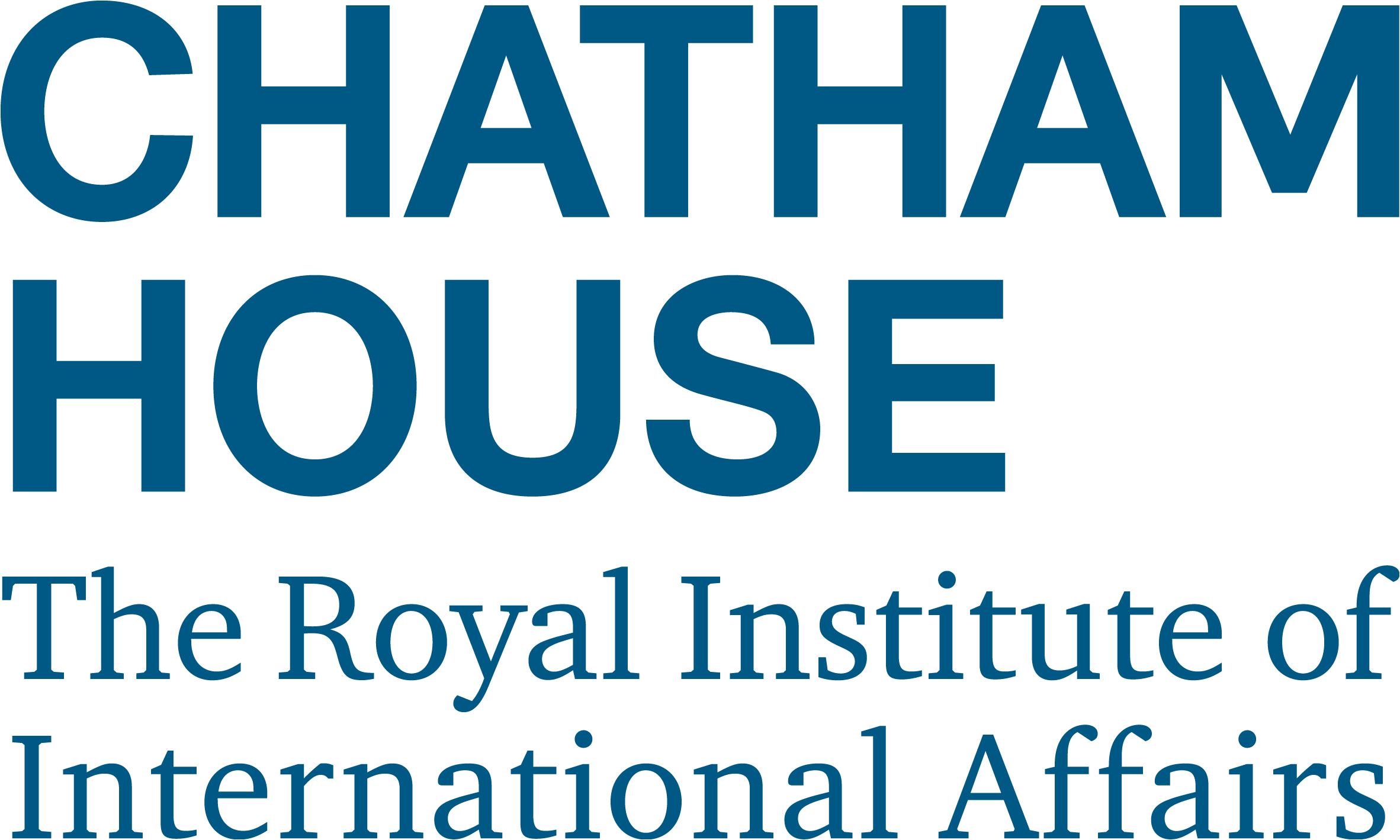
Chatham House, also known as the Royal Institute of International Affairs, is an independent policy institute headquartered in London. Its mission is to provide authoritative commentary on world events and offer solutions to global challenges. It is the originator of the Chatham House Rule.
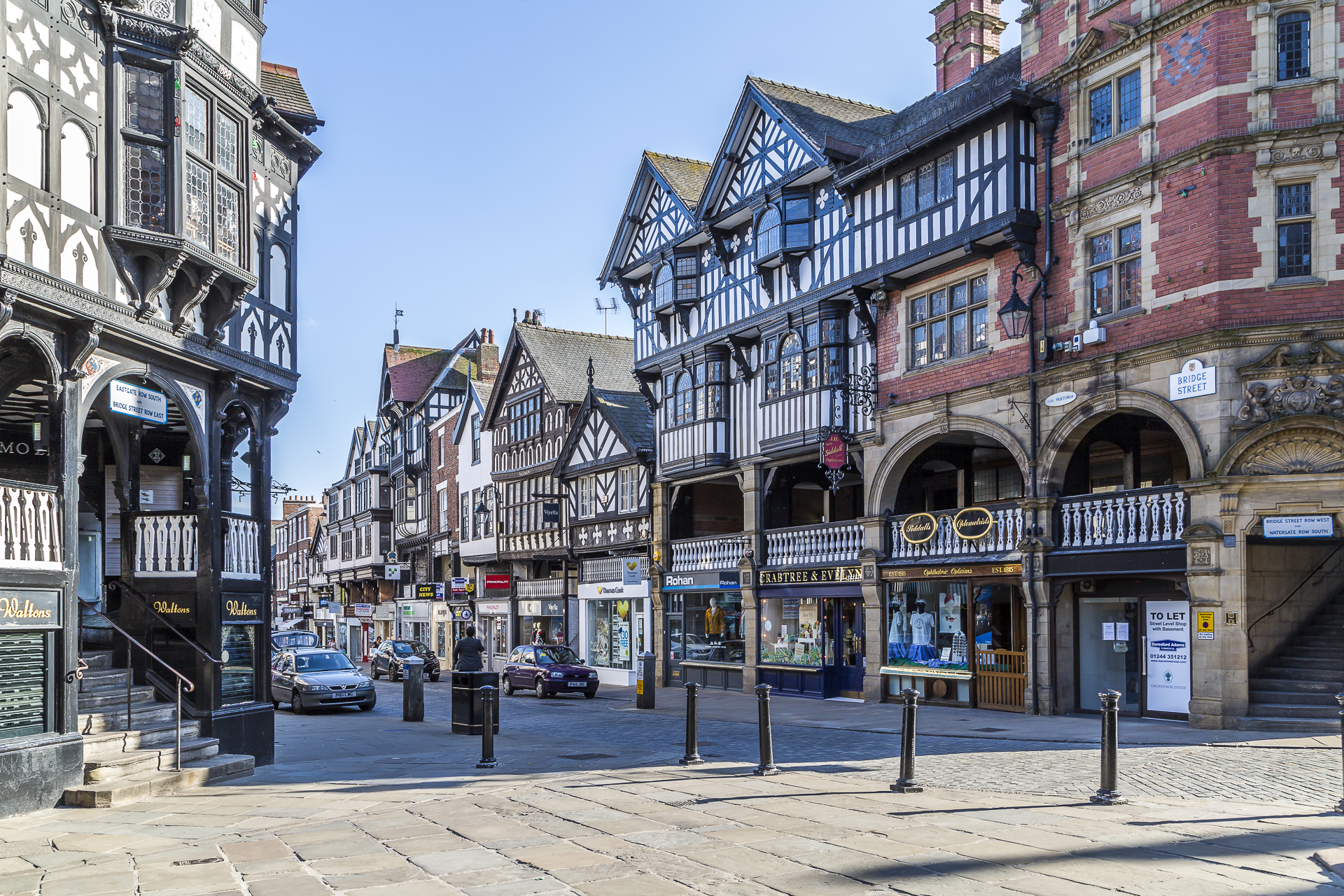
Chester is a walled cathedral city in Cheshire, England. It is located on the River Dee, close to the English-Welsh border. With a population of 79,645 in 2011,[2] it is the most populous settlement of Cheshire West and Chester (a unitary authority which had a population of 329,608 in 2011)[2] and serves as its administrative headquarters. It is also the historic county town of Cheshire and the second-largest settlement in Cheshire after Warrington.
Chester was founded in 79 AD as a "castrum" or Roman fort with the name Deva Victrix during the reign of Emperor Vespasian. One of the main army camps in Roman Britain, Deva later became a major civilian settlement. In 689, King Æthelred of Mercia founded the Minster Church of West Mercia, which later became Chester's first cathedral, and the Angles extended and strengthened the walls to protect the city against the Danes. Chester was one of the last cities in England to fall to the Normans, and William the Conqueror ordered the construction of a castle to dominate the town and the nearby Welsh border. Chester was granted city status in 1541.
The city walls of Chester are some of the best-preserved in the country and have Grade I listed status. It has a number of medieval buildings, but many of the black-and-white buildings within the city centre are Victorian restorations, originating from the Black-and-white Revival movement.[3] Apart from a 100-metre (330 ft) section, the walls are almost complete.[4] The Industrial Revolution brought railways, canals, and new roads to the city, which saw substantial expansion and development; Chester Town Hall and the Grosvenor Museum are examples of Victorian architecture from this period. Tourism, the retail industry, public administration, and financial services are important to the modern economy.
 International cities
International cities
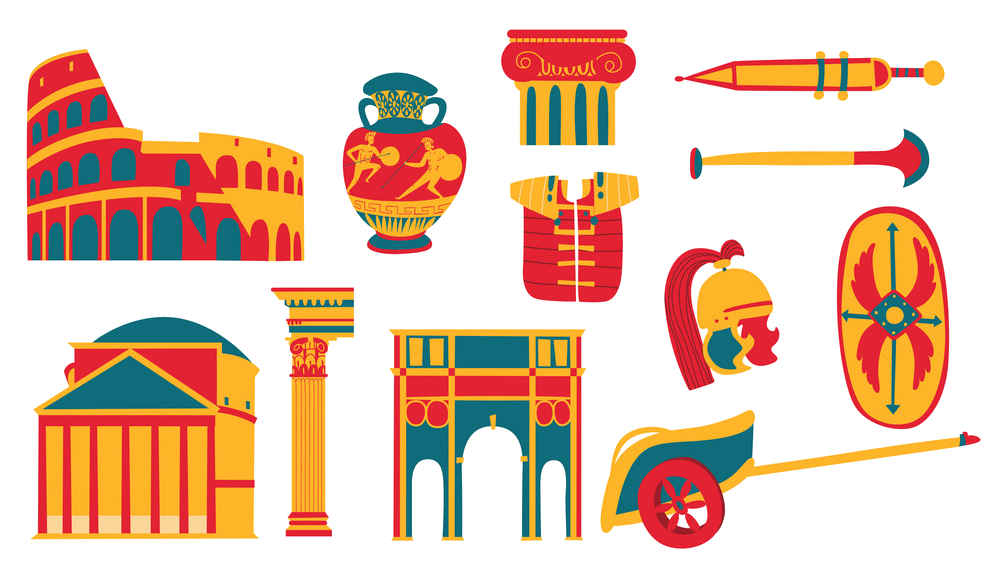 Cities founded by the Romans
Cities founded by the Romans
 World Heritage
World Heritage
 Architecture
Architecture
 Art
Art
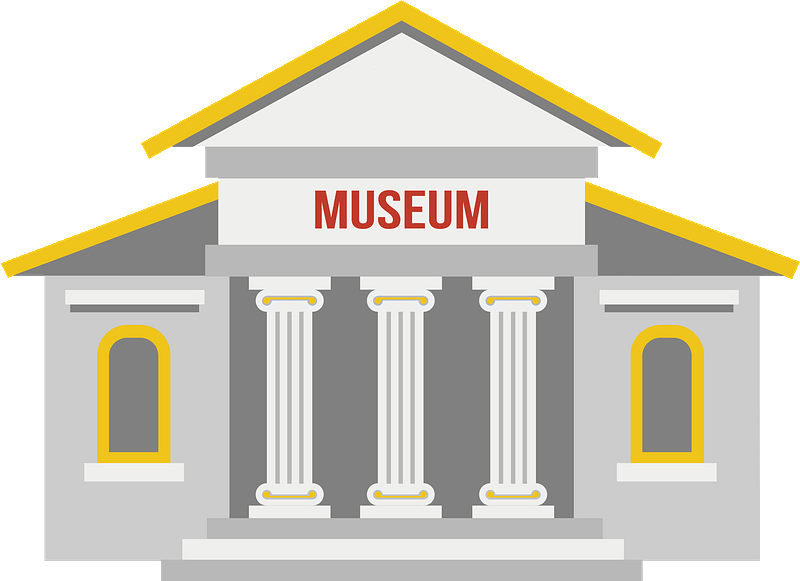 Museum
Museum
 Important port
Important port
 Party and government
Party and government
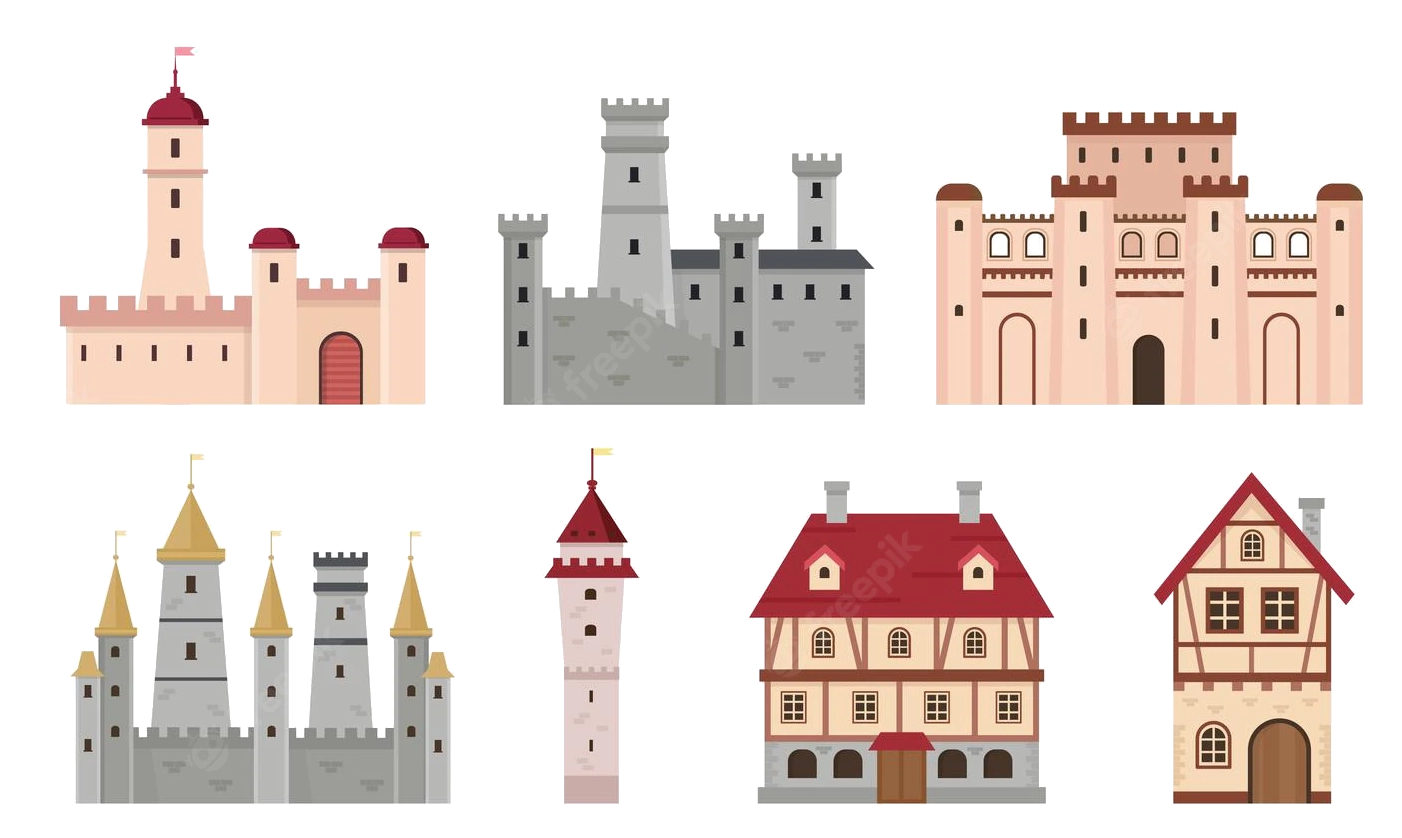 Medieval cities in Europe
Medieval cities in Europe